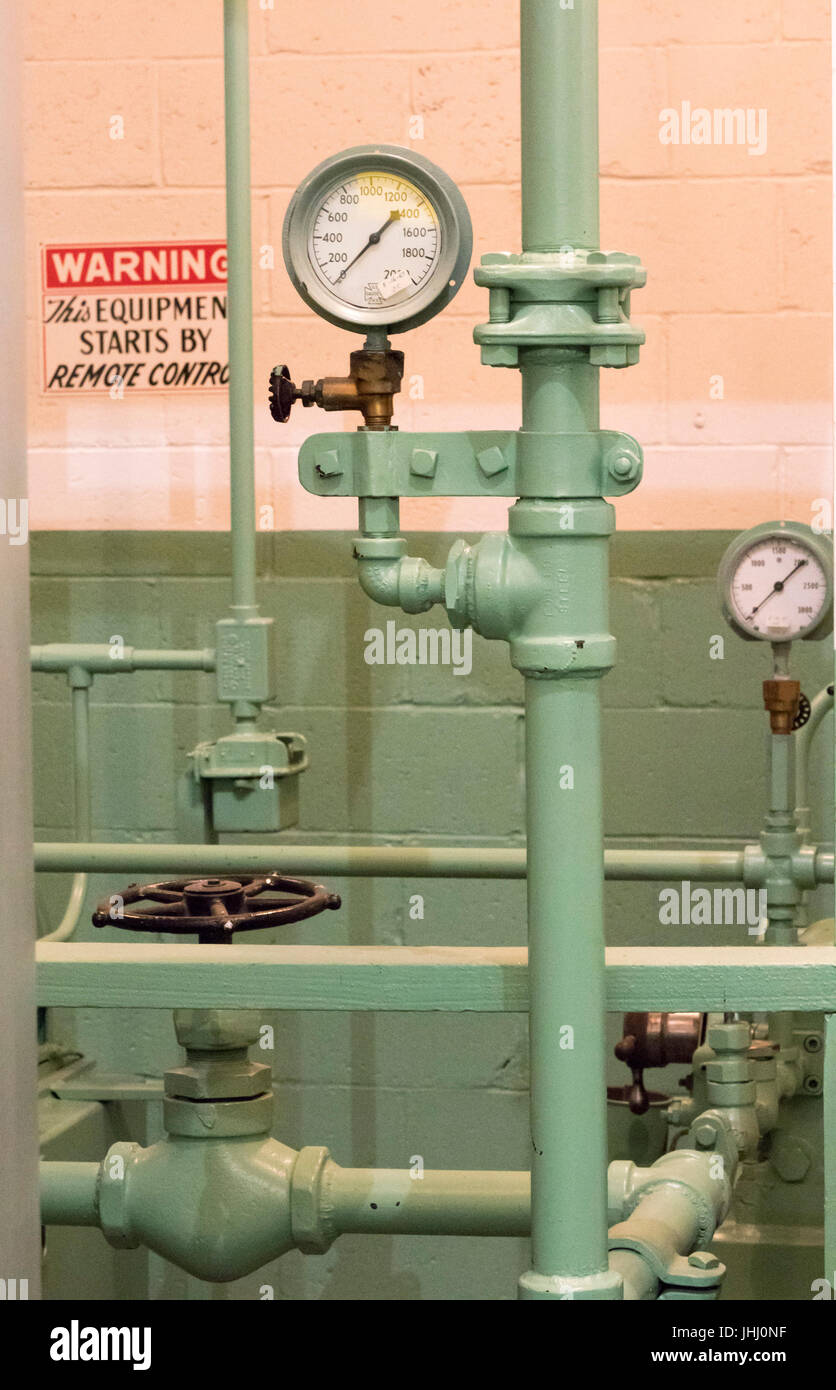gauges in Accumulator room, The B Reactor Hanford, near Richland, Washington

Image details
Contributor:
B.O'Kane / Alamy Stock PhotoImage ID:
JHJ0NFFile size:
24.5 MB (1.2 MB Compressed download)Releases:
Model - no | Property - noDo I need a release?Dimensions:
2348 x 3650 px | 19.9 x 30.9 cm | 7.8 x 12.2 inches | 300dpiDate taken:
13 July 2017Location:
Hanford, Benton County, Washington, USAMore information:
The accumulator room provided a backup system for inserting HCRs (high performance compact reactors) in the event of a power failure. The B Reactor at the Hanford Site, near Richland, Washington, was the first large-scale nuclear reactor ever built. The project was commissioned to produce plutonium-239 by neutron activation as part of the Manhattan Project, the United States nuclear weapons development program during World War II. The B reactor was fueled with metallic natural uranium, graphite moderated, and water-cooled. It has been designated a U.S. National Historic Landmark since August 19, 2008 and in July 2011 the National Park Service recommended that the B Reactor be included in the Manhattan Project National Historical Park commemorating the Manhattan Project. The reactor was designed and built by E. I. du Pont de Nemours and Company based on experimental designs tested by Enrico Fermi at the University of Chicago. It was designed to operate at 250 megawatts (thermal). The B Reactor had its first nuclear chain reaction in September, 1944, The reactor produced plutonium-239 by irradiating uranium-238 with neutrons generated by the nuclear reaction. It was one of three reactors – along with the D and F reactors – built about six miles (10 km) apart on the south bank of the Columbia River. Emergency shutdown of the reactor, referred to as a SCRAM, was attained either by rapidly fully inserting the vertical safety rods (now called control rods) or, as a backup method, by the injection of borated water into the reactor. The plutonium for the nuclear bomb used in the Trinity test in New Mexico and the Fat Man bomb dropped on Nagasaki, Japan was created in the B, D, and F reactors. These first three reactors ran for two decades, and were joined by additional reactors constructed later. The B Reactor was permanently shut down in February 1968.